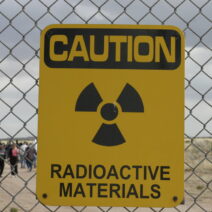Understanding the climate and its definition is crucial for grasping the complexities of our environment. Climate encompasses a multitude of factors, including weather patterns, temperature variations, and atmospheric conditions that exist over extended periods. Rather than understanding climate through day-to-day weather fluctuations, it is vital to appreciate its long-term trends that shape ecosystems, human societies, and global biodiversity.
We find ourselves at a critical juncture in the conversation surrounding climate. The ramifications of climate change are unprecedented, affecting every corner of our planet. Thus, comprehending the fundamental definition of climate allows us to dissect these issues critically and understand the implications they have on our lives and the world at large.
This article will explore the essence of climate by clarifying its definition, examining the components that contribute to it, and discussing its broader implications for humanity and the environment.
Defining Climate: A Holistic Perspective
Climate refers to the long-term patterns of temperature, humidity, wind, precipitation, and other atmospheric conditions in a particular region. Unlike weather, which can change rapidly and is usually described over short timescales—like days or weeks—climate is assessed over extended periods, typically 30 years or more. Climatic data is collected and analyzed to generate insights into how environmental conditions evolve over time.
It’s essential to distinguish between the various climate classifications, such as tropical, temperate, and polar climates, which are characterized by distinct temperature ranges and seasonal patterns. Each climate zone supports unique ecosystems and biodiversity, affecting agriculture, forestry, and water supply significantly.
Components Influencing Climate: The Interconnectedness of Earth Systems
The factors that influence climate are profoundly interconnected, forming a complex system crucial for maintaining balance on Earth. These components include:
1. Solar Radiation: The sun is the primary energy source for Earth’s climate. Variations in solar radiation due to changes in the Earth’s orbit and axial tilt can induce significant climatic shifts.
2. Atmospheric Composition: The mixture of gases in the atmosphere, predominantly nitrogen and oxygen, plays a pivotal role in regulating climate. Greenhouse gases, including atmospheric carbon dioxide and methane, trap heat and contribute to the greenhouse effect, which warms our planet. Conversely, pollutants can impact climate by reflecting sunlight away from Earth.
3. Ocean Currents: The world’s oceans act as a massive heat reservoir, distributing warmth around the globe through complex current systems. Oceanic circulation patterns, like the Gulf Stream, can reinforce or mitigate the effects of climate change, impacting weather patterns and sea levels globally.
4. Land Surface: Different surfaces—such as forests, deserts, and urban areas—absorb and reflect solar energy differently, impacting local climatic conditions. Deforestation, for instance, can lead to increased temperatures and altered rainfall patterns.
Understanding these components illuminates the intertwined nature of the Earth’s systems and how disruptions in one area can trigger cascading effects throughout the climate system.
The Implications of Climate: Global Challenges and Environmental Considerations
The significance of understanding climate extends far beyond academia; it shapes policies, economic models, and social frameworks. Climate change, largely attributed to anthropogenic activities—such as fossil fuel burning and deforestation—poses a grave threat to global stability. The consequences can manifest in several devastating ways:
1. Extreme Weather Events: Increased temperatures lead to more frequent and severe weather phenomena, such as hurricanes, floods, droughts, and wildfires. These events disrupt communities, destroy infrastructure, and necessitate humanitarian relief efforts.
2. Biodiversity Loss: Ecosystems are tailored to specific climatic conditions. Rapid changes can outpace the ability of species to adapt, leading to extinction and reduced biodiversity. This loss compromises ecosystem services, which are essential for food production, clean water, and climate regulation.
3. Economic Disparities: Climate impacts disproportionately affect vulnerable populations, exacerbate existing inequalities, and create economic instability. Agricultural sectors, particularly in developing regions, face risks that endanger food security, necessitating adaptive measures and technologies.
4. Health Risks: Changing climate conditions can promote the spread of diseases and deteriorate public health. Heatwaves, poor air quality, and flooding can lead to illness and increased mortality rates, placing additional strain on healthcare systems.
Conclusion: The Necessity of Awareness and Action
Comprehending the definition of climate is not just an academic exercise; it offers valuable insight into the ecological fabric of our planet. As climate change accelerates, recognizing the interconnectedness of climate components empowers individuals, communities, and governments to take informed actions. Whether through sustainable practices, climate policy advocacy, or conservation efforts, a concerted response is essential to mitigate the deleterious impacts of climate change.
Creating a sustainable future requires a deep understanding of climate and its far-reaching implications. It is a collective responsibility that transcends borders and disciplines—the time for awareness and action is now.






